
(Haworth) Haworth, Synopsis Plantarum Succulentarum 195, 1812
Neotype; Neotype; Herbarium; Herbarium; Herbarium; Herbarium; Herbarium; Herbarium; Herbarium; Herbarium; Herbarium; Herbarium; Herbarium; Herbarium; Herbarium; Herbarium; Herbarium; Herbarium (O. frustulenta); Painting
Original Description
What is Opuntia pusilla?
Opuntia pusilla is a small prickly pear cactus of the Atlantic Coastal Plants from North Carolina, and across parts of northern Florida to Mississippi. While thought of as a beach cactus, this small prickly pear cactus may occur more than 100 miles inland.
Details
The stems of this prickly pear cactus are flattened, elliptic to linear, sometimes subcylindric (to subspheric), 2.5-5(-8) × 1.2-2.5 cm. The stem segments are fragile and detach easily. Spines (0)1-2(-4) per areole are restricted the distal half of the areoles, but some areoles may have no spines. Spines are porrect to spreading, terete, and 20(30) mm.
The flowers of this Opuntia are completely yellow. Fruits become red-purple and are barrel-shaped. Seeds are tan, subcircular, flattened, and 4 to 6 mm in diameter with a slight girdle.
O. pusilla is diploid, triploid, or tetraploid.
Other Notes
The ploidies may indicate that there are different but similar-appearing taxa, or they may only indicate ploidy differences within a single taxon. All are treated as a single taxon herein.
O. drummondii may be the correct name for this Opuntia (L Majure, page 167). Some reports (Weniger, 1988) place it on the northern Gulf Coast of Texas, but the authors have not observed it there. Several other specific epithets have been applied to this smallest of the southeastern Opuntias, including tracyi, and pes-corvi. Perhaps these are synonyms, or perhaps they are discrete taxa yet to be sorted out.
For more information, see:
Cytogeography of the humifusa clade of Opuntia.
O. drummondii Graham, Britton and Rose, v1. 1919, p. 104.
GenBank locus KJ773704.1.



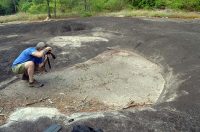


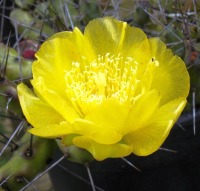

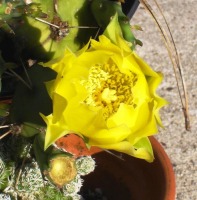



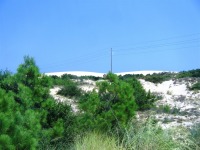





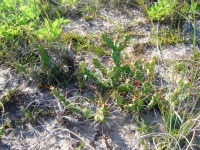




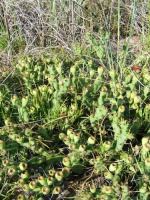
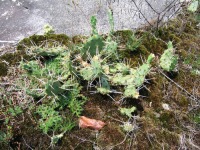



Hello, propagation techniques?
Hi OMW,
I like to lay the pads on their sides in late spring, just before hot weather starts, but you can usually do it any time of year. Just wait for hot weather and will start to grow. water them once a week when young, then taper off.
Joe